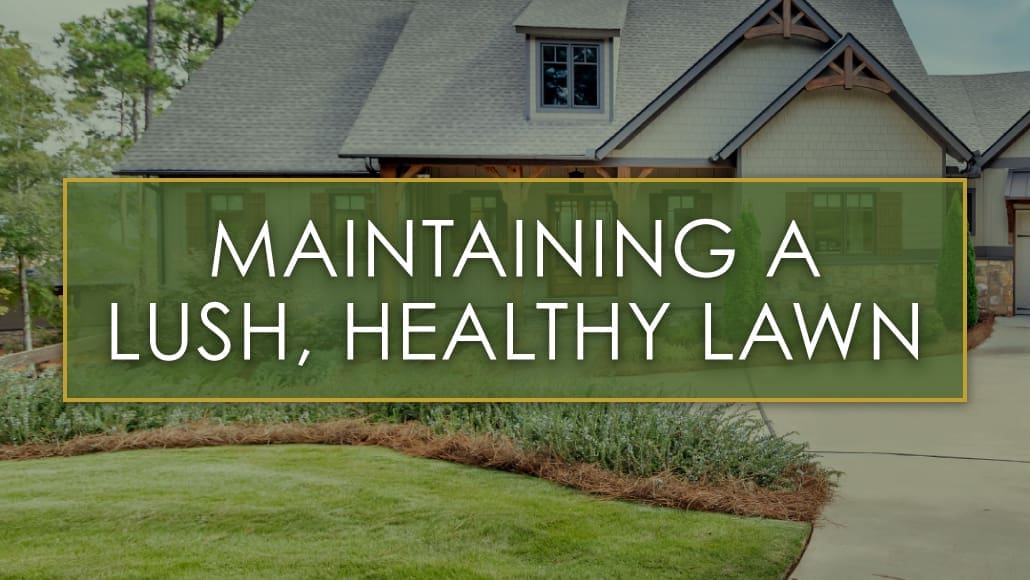When your lawn is healthy, lush, and as soft as a carpet, it feels SO GOOD under bare feet! Lawns have gotten a bad rap lately with the push towards sustainability. Listen, I’m ALL for increasing biodiversity, reducing chemicals, and being a good steward of our environment in general. However, it doesn’t have to be an either/or scenario. At the end of the day, if you need outdoor play space for kids, dogs, or adults (c’mon yall, yard games are FUN), sod is an excellent choice. Here are some tips for sustaining a happy, healthy lawn that’s not wasteful:
- Hire a professional for your chemical applications. Calibrating your weed control and fertilizer to only apply what your lawn will take up is a must. There are some organic solutions out there that are better than nothing but are not as effective as synthetic chemicals. If you want to go all organic, you just have to be more tolerant of weeds coming through. A slow, steady watering of your chemicals helps as well. If you apply right before a downpour, it’s all going to runoff into whatever is below you.
- Put in the attention to get your sod established well. The first growing season (April – November), your sod will need more water than it will in subsequent years. The goal during this time is to train the roots to grow deep. The most effective way to do this is to saturate the soil and reduce the frequency of watering. If you water every day, your roots will stay shallow at the surface because you aren’t giving them a reason to grow down looking for water. If you let your lawn dry out in between waterings, you will develop a strong, deep root system that is less susceptible to drought. Think about it, the more dense and deep your root system is, the longer it will take to dry out. REMEMBER – irrigation is supplemental water. If we are getting enough rain, you DO NOT need to run your system too. I ran mine 2-3 times total last year. *You will need to water daily if you install new sod during the heat of the summer. As soon as you can pull on the sod and it doesn’t pull up easily, you can start reducing frequency and increasing run times.
- It’s much easier to recover your sod from being too dry than too wet. If you are paying attention and start to see your sod lose a little color in the summer, you can run your system for a good saturation and it will bounce right back immediately (assuming you catch it before it’s totally yellow, but even then it doesn’t take long to bounce back). However, if your yard is saturated and mushy, we have to rely on Mother Nature to dry it out. If we continue to get rain, your sod will continue to decline. Er on the side of too dry!
- Mulch your clippings. Using a mulching kit on your mower instead of a collection unit incorporates organic matter back into your soil, reducing your need for fertilizer. It also reduces labor and gas needed to collect and dispose of the clippings.
- Sod in our area needs full sun. I know, I know. Everyone wants to have their cake and eat it too. In a lush lawn of shade-tolerant sod under a big, shady tree. Sorry. Not where we are. Our sod options are Bermuda, Centipede, and Zoysia. I don’t even want to talk about Centipede. It makes me ragey. Bermuda is ok in completely full sun, but it’s not lush, or barefoot-friendly. Zoysia is more tolerant of shade than Bermuda, but still wants at least 5-6 hours of direct sun (so, basically full sun). Zoysia is the way to go when choosing sod here. If it starts to thin out from too much shade, I’d suggest incorporating planting beds in those areas.
At the end of the day, incorporate trees, shrubs, perennials, as many natives as you can, AND a lawn space. I had someone call asking for synthetic turf because they heard lawns are bad. EPIC FACEPALM. Lawns produce oxygen and sequester carbon, clean and cool the air, prevent soil erosion, and provide great spaces for your family and friends to build lasting memories. Go synthetic if you want, but, Lord, help me, don’t do it because you think it’s better for the environment than sod.




